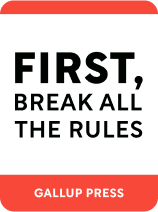

This article is an excerpt from the Shortform book guide to "First, Break All the Rules" by Gallup Press. Shortform has the world's best summaries and analyses of books you should be reading.
Like this article? Sign up for a free trial here .
What are your main business objectives? Do you think your objectives align with the purpose of your business?
Every organization has different goals. For example, a retail store may focus on customer satisfaction whereas a medical organization— on patient safety. While these goals aren’t mutually exclusive, these organizations have different priorities because they have different purposes.
When defining business objectives for your organization, ask yourself the following three questions.
Setting Business Objectives
Organizations need to define business objectives so they know where they’re heading and whether they’re on or off course. The first thing to consider when defining business objectives is to, first and foremost, consider the purpose of your business. If you can’t name the main purpose of your business, ask yourself these three questions:
Question #1: What Do Your Customers Need?
This is the first question you need to ask because, without customers or clients, your company has no value. Use focus groups or customer surveys to ask your clientele what they want and expect from their experience with you. Use this information to inform your organization’s goals by zeroing in on the items that your customers feel passionate about.
For example, if you manage a grocery store, you may believe that promoting new products is the best way to bring in customers. However, if your customers just want to be able to consistently buy the products that they love, they won’t necessarily care how many new products you’re bringing in. In this situation, you need to adjust your goal away from bringing in different products and shift it towards maintaining stock of popular products.
Question #2: What Does Your Company Need?
While a company’s core mission typically remains the same over time, the strategies you use to execute that mission change. Adapt your goals as you change your strategies. This adjusts the focus of your desired outcomes toward your new approach to fulfilling your company’s mission.
For example, you manage a design team within a clothing company. Your company’s core mission is to create affordable and stylish clothing. At its conception, your company’s strategy was to focus on the creation of new designs to attract new customers. However, as your company has become more mainstream, they’ve decided to shift their strategy to creating clothing that can be mass produced at a low-cost to keep up with the demands of current customers. To accommodate this, you shift the goals of your team from “unique designs per month” to “cost per design.”
Question #3: What Do Your Employees Need?
As you now know, every employee has a unique set of talents that inform the way that they work. When you set goals, you need to keep these talents in mind to adapt to each employee. While this is more challenging with larger or more standardized teams, you need to adjust as much as possible to ensure a more effective result.
For example, you manage a development team that creates new gadgets for various industries. Overall, you’ve set a goal for your team that requires them to complete ten designs per quarter. However, you know that each individual member of your team is motivated by different striving talents (as a reminder, striving talents inform an employee’s motivations).
Kelsey has the striving talent of completion whereas Eric and Ben have the striving talent of competition. You give Kelsey the additional goal of testing at least two of her designs before the end of the quarter and attach it to a financial incentive. On the other hand, you put Eric and Ben on the same projects and agree to give a bonus to whoever comes up with better designs for each project.

———End of Preview———
Like what you just read? Read the rest of the world's best book summary and analysis of Gallup Press's "First, Break All the Rules" at Shortform .
Here's what you'll find in our full First, Break All the Rules summary :
- Why only 13% of the world’s workforce is actively engaged at work
- How to find strong employees and keep them
- The 12 questions to ask your employees that help you determine the strength of your organization





